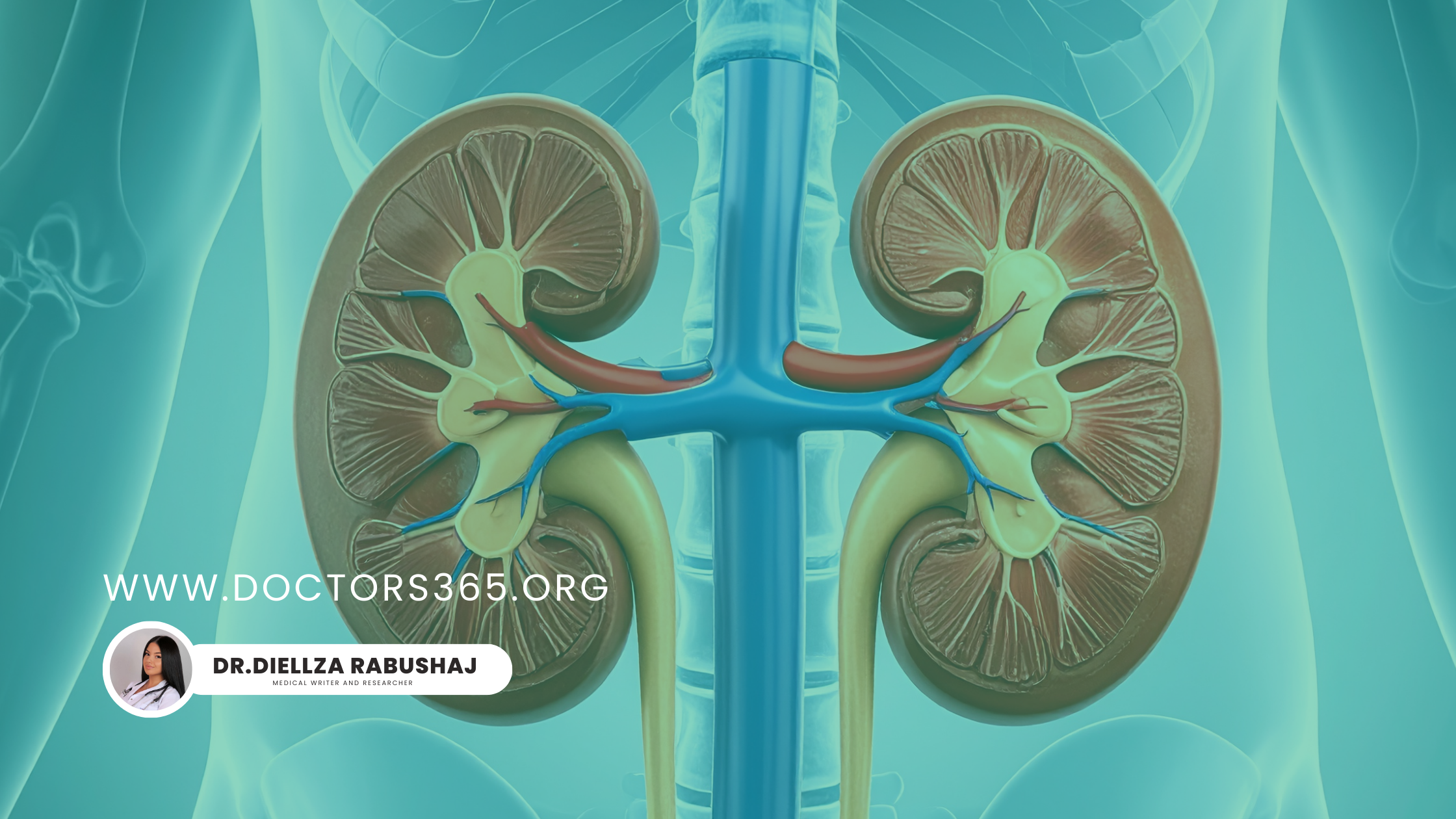
Cardiology
See Your Risk. Prevent the Event.
Imaging + stress tests, explained—and how they power prevention.
This evidence-based guide explains how expert cardiac imaging and stress testing inform smarter heart-disease prevention. You’ll learn when to choose stress imaging vs CCTA, why broad screening in low-risk people rarely helps, and how prevention-first strategies—lipids, BP, diabetes control, lifestyle—drive event reduction. We summarize what landmark trials (COURAGE, ISCHEMIA, PROMISE, SCOT-HEART) mean for daily decisions and how nuclear techniques (SPECT/PET) refine risk, detect microvascular disease, and motivate adherence. We also outline what’s safe online vs in-person, red-flag symptoms that need urgent care, and how Doctors365 connects you to verified cardiologists for rapid access, secure visits, and clear next steps.
Educational only — not a substitute for personal medical advice, diagnosis, treatment, or emergency care. If you have chest pain, breathlessness at rest, fainting, or stroke-like symptoms, call your local emergency number immediately.
Author: Dr. Diellza Rabushaj
Medically reviewed by: Dr. Spec Orhan Karahodza
1. Expertise in Cardiac Imaging, Stress Testing, and Heart Disease Prevention
Heart disease is still the world’s leading killer—but with the right combination of targeted cardiac imaging, appropriate stress testing, and fierce risk-factor control, we can detect problems earlier, personalize treatment, and prevent events. Below, I’ll show how today’s evidence helps answer three practical questions: Do you have disease? How risky is it? What can we change now to lower that risk? [1–11]
2. Cardiac Imaging—What It Covers (and When It Helps)
Cardiac imaging isn’t one test—it’s a toolbox:
- Echocardiography: ultrasound for valve disease, wall motion, ejection fraction.
- Coronary CT angiography (CCTA): noninvasive plaque/narrowing visualization—powerful for ruling out obstructive CAD and refining prevention in many patients. [9,10]
- Cardiac MRI (CMR): gold-standard volumes, scar, inflammation (myocarditis), tissue characterization.
- Nuclear perfusion imaging (SPECT/PET): maps blood flow at rest vs stress; PET can quantify absolute myocardial blood flow and microvascular dysfunction. [4,7,11]
Key idea: Imaging is most valuable when it changes management—clarifies risk, guides therapy, or avoids unnecessary procedures. Routine screening of low-risk, asymptomatic people rarely helps and can even distract from prevention basics. [2]
3. Cardiac Stress Testing—What It Shows
A stress test evaluates the heart under load:
- Exercise ECG (treadmill/bike): looks for ischemic ECG changes and symptoms.
- Imaging stress tests: exercise or pharmacologic stress paired with SPECT, PET, or stress echo to localize/quantify ischemia.
Modern nuclear techniques improve diagnostic accuracy and risk stratification, yet population screening is limited; testing should be targeted to symptoms and pre-test probability. [4,7,11]
4. Prevention First: Primary vs Secondary
- Primary prevention (no prior MI/stent/bypass): focus on lifestyle, lipids, BP, diabetes control, smoking cessation. Trials that screened asymptomatic populations with imaging were underpowered due to low event rates, so broad screening hasn’t shown hard-event reduction; use imaging selectively to refine risk and motivate adherence. [2,9]
- Secondary prevention (known CAD): event reduction hinges on aggressive risk-factor control (LDL, BP, glycaemia, exercise, weight, smoking). In stable CAD, adding routine stents to optimal medical therapy does not reduce MI or death versus medical therapy alone—though stents can greatly relieve angina. [5,6]
5. How Imaging Improves Decisions
- Risk clarification: A normal stress imaging study generally predicts low short-term risk, supporting medical therapy and lifestyle focus. [7,11]
- Finding actionable ischemia: Moderate–severe ischemia identifies patients who may need intensified prevention and, in some scenarios, anatomic definition (CCTA or invasive angiography). [6,7,11]
- Motivation & adherence: Seeing plaque (CCTA) or ischemia (SPECT/PET) can boost commitment to statins, BP control, and exercise—where the biggest outcome gains live. [2,5,6,9]
6. Nuclear Stress Testing—What’s New and Why It Matters
- SPECT has sharper images and lower dose thanks to solid-state detectors and iterative reconstruction.
- PET offers higher resolution, attenuation correction, and absolute blood-flow quantification—helpful for microvascular angina and multivessel/balanced ischemia.
- Molecular imaging is emerging to visualize plaque biology (inflammation, metabolism), opening doors for even earlier prevention strategies. [4,11]
7. Do Stents Prevent Heart Attacks in Stable CAD?
In stable disease, landmark trials show optimized medical therapy (OMT) reduces events, while routine stenting does not reduce MI or death versus OMT alone; stents primarily improve symptoms. This “prevention-first” approach is the backbone of modern care. [5,6]
8. When to Consider Testing (and When Not To)
Testing is reasonable if you have:
- Exertional chest pressure or unexplained dyspnoea
- Intermediate pre-test probability based on age/sex/risk factors
- Known CAD with new/worsening symptoms despite therapy
- Occupational needs (e.g., pilots, commercial drivers) requiring precise risk assessment
Testing is usually not helpful in low-risk, asymptomatic people; focus on risk control first. [2,7,9,10]
9. How Doctors365.org Works (Simple 5-Step Flow)
- Browse cardiology specialists: /doctors/cardiology/all/
- Pick a time that suits you—same-day/next-day often available.
- Confirm & pay securely online.
- Join your visit via encrypted video (no app needed).
- After-visit summary with prescriptions, imaging/lab orders, and next steps—delivered to your inbox.
10. Benefits of Online Cardiology With Doctors365
- 24/7 access without travel or waiting rooms.
- Privacy & security via encrypted video and verified clinicians.
- Convenience for follow-ups, medication titration, and test planning.
- Cost-smart triage: decide if you need imaging—and which—before hospital visits. [1,3]
11. Quality, Safety, and Trust
- Verified cardiologists with deep expertise in imaging, stress testing, and prevention.
- Clinical governance (peer review, structured documentation).
- Secure infrastructure (encrypted video, secure payments, compliant data storage). [1,3]
12. Use-Case Specialties & Our Featured Doctors
- Chest pain & diagnostic pathways: choosing between stress imaging and CCTA, avoiding unnecessary invasive tests. [7,9,10,11]
- Prevention programs: lipid/BP/diabetes optimization with clear OMT plans. [5,6]
- Microvascular and atypical angina: consider PET flow quantification or stress echo. [11]
Book with a trusted Doctors365 cardiologist:
- Dr. Andreas Mussigbrodt — Cardiology – Preventive cardiology, ECG/stress testing strategy, medication optimization.
- Dr. William Novick — Cardiology – Complex case coordination, second opinions on imaging.
- Dr. Christos Varounis — Cardiology – Chest pain evaluation, lipid and BP optimization, test selection.
Explore all cardiologists: /doctors/cardiology/all/
13. What’s Appropriate Online vs In-Person (and Red Flags)
Great for online:
- Risk assessment and prevention plan
- Deciding which test fits your symptoms/risk
- Results interpretation (ECG, echo, stress imaging, CCTA, labs)
- Medication starts/titration (statins, antihypertensives, antianginals)
Go in-person/urgent if you have:
- Chest pain at rest, pressure to arm/jaw, new severe dyspnoea
- Syncope, palpitations with collapse
- Stroke signs (face/arm weakness, speech disturbance)
- Unstable vitals (very low BP, very fast/slow HR)
If any above occur, call emergency services immediately.
14. Pricing & Availability
- Transparent pricing at booking, no hidden fees.
- Bundles for prevention programs and follow-up image interpretation.
- Rapid access: many doctors offer same-day/next-day slots.
See openings: /doctors/cardiology/all/
15. Practical Prep for Your Online Cardiology Visit
- Numbers ready: latest BP, heart rate, weight; lipid panel; A1c (if diabetic).
- Medication list with doses + allergies.
- Symptom diary: triggers, duration, relieving/aggravating factors.
- Exercise tolerance: what brings on discomfort/breathlessness?
- Upload prior tests: ECGs, echo, stress tests, CCTA/CMR reports.
- Goal-setting: e.g., “Do I need a stress test?” or “How do I get LDL <1.8 mmol/L (<70 mg/dL)?”
- Book a preventive-cardiology consult now » /doctors/cardiology/all/
- Need clarity on testing (stress vs CCTA)? Start here » /doctors/cardiology/all/
17. FAQs
1) Do I need a stress test if I have no symptoms?
Usually no. In low-risk, asymptomatic people, routine screening with imaging hasn’t shown event reduction; focus on lifestyle + medical prevention. Consider testing if your overall risk is intermediate or symptoms evolve. [2,7,9]
2) PET vs SPECT—what’s the difference?
PET has higher resolution and can measure absolute blood flow (great for microvascular disease); SPECT is widely available and accurately detects regional ischemia. [4,11]
3) If my stress test is normal, am I “clear”?
A normal result predicts low short-term event risk, but long-term prevention still matters—control LDL, BP, diabetes, exercise, don’t smoke. [7,11]
4) Do stents prevent heart attacks in stable CAD?
Not by themselves. In stable CAD, stents are best for symptom relief; event reduction comes from optimized medical therapy and risk-factor control. [5,6]
5) How does CCTA compare to stress testing?
CCTA excels at ruling out obstructive CAD and identifying non-obstructive plaque that guides prevention; stress imaging quantifies ischemia and risk. The choice depends on symptoms, age, risk profile, and local expertise. [9,10]
18. References (Vancouver style)
- Yancy C. Cardiology patient page. Online program aids heart patients and their doctors. Circulation. 2002. (Abstract).
- Rozanski A, Muhlestein J, Berman D. Primary prevention of CVD: the role of imaging trials. JACC Cardiovasc Imaging. 2017. (Abstract).
- Gordon N. New methods of delivering secondary preventive services: the promise of the Internet. J Cardiopulm Rehabil. 2003. (Abstract).
- Vesely M, Dilsizian V. Nuclear cardiac stress testing in the era of molecular medicine. J Nucl Med. 2008;49(3):399–413.
- Siranosian K. A conversation with Dr. David J. Maron, Director of Preventive Cardiology at Stanford Hospital and Clinics. J Clin Transl Sci. 2022. (Full text interview summarizing COURAGE/ISCHEMIA).
- Boden WE, O’Rourke RA, Teo KK, et al. Optimal medical therapy with or without PCI for stable coronary disease. N Engl J Med. 2007;356:1503–1516. (COURAGE).
- Maron DJ, Hochman JS, Reynolds HR, et al. Initial invasive or conservative strategy for stable coronary disease with moderate–severe ischemia. N Engl J Med. 2020;382:1395–1407. (ISCHEMIA).
- Hachamovitch R, Berman DS, Shaw LJ, et al. Incremental prognostic value of myocardial perfusion SPECT for risk stratification of suspected CAD. Circulation. 2003;107:2900–2907.
- Douglas PS, Hoffmann U, Patel MR, et al. Outcomes of anatomical vs functional testing for suspected CAD (PROMISE). N Engl J Med. 2015;372:1291–1300.
- SCOT-HEART Investigators; Newby DE, Adamson PD, et al. Coronary CT angiography and clinical outcomes in patients with stable chest pain. N Engl J Med. 2018;379:924–933.
- Murthy VL, Naya M, Foster CR, et al. Improved cardiac risk assessment with PET myocardial perfusion imaging. Circulation. 2011;124:2215–2224.
Ready to act on your heart health?
Book now: /doctors/cardiology/all/
Written by Diellza Rabushaj, Medical Writer & Researcher.
Recommended articles for You

Evidence-based online ED care with real doctors, not just pill websites.

Discover how personalised medicine in bladder and urological cancers fits into convenient, secure online care with Doctors365 specialists.

What online doctors prescribe most often, and how Doctors365 can help you use these medicines safely.